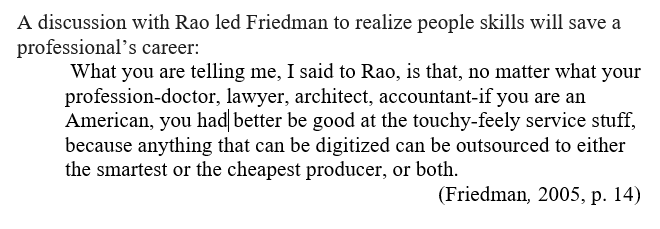A good resource for MLA is here. Make sure to read an overview about Citations to ensure you have a clear understanding of the multiple citation formats required by different disciplines.
MLA Format Basics
Check out the basics for both IN-TEXT and WORKS CITED citations.
Works Cited Format
Works Cited give all the publishing information so someone else can find the text. In MLA, online sources need an access date and a full URL minus the http designation.
For order of information and whether to use abbreviations, lower case, https etc., please look at the example below:

In-Text Citations
In-text Citations require the author and the page number (with no “p”) and no comma. The period of the sentence goes AFTER the citation. E.g. (Jones 257). Two authors: (Smith and Jones 257) and three or more: (Smith et al. 257). No authors or page (“How to”).
How and where to place In-Text Citations
As an introductory phrase:
According to Friedman (2005), international trade barriers will have mostly disappeared in the 21st century.
Friedman said that professionals “better be good at … touchy-feely service” (14).
At the end of general summary (no page needed):
The 21st Century is characterized by the “flat world” in which barriers among countries, communities, and citizens no longer exist or are flattened. As a result, professionals must prepare for the threat of outsourcing (Friedman).
At the end of a quote even within a sentence (page needed):
Since factories are easy to outsource abroad, American workers should prepare to work in the service industry by developing soft skills (Friedman 14).
Block quote (more than 4 lines):
